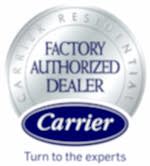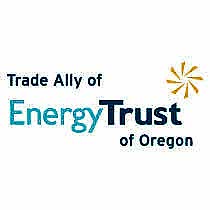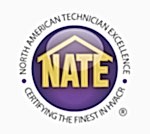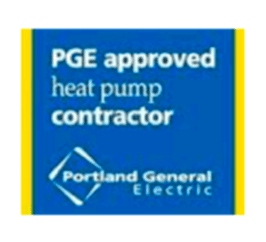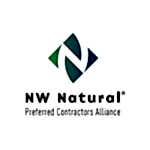If you are shopping for a furnace you have probably seen the ubiquitous yellow Energy Guide label that is on just about every appliance in the U.S. Navigating these labels can be confusing and frustrating. We are here to help. This guide will help you understand AFUE ratings for furnaces and how to pick the right energy-efficient system for your home.
What is AFUE Rating?
A furnace’s Annual Fuel Utilization Efficiency (AFUE) rating indicates how efficient the furnace is at heating over time. This determines how much fuel it needs to heat your home, and can save you money on your energy bill.
AFUE ratings are measured between 0-100%. A higher AFUE means that the furnace will be more efficient with the combustion gases it uses, which will cost less in energy bills for your household.
Difference between AFUE and SEER
It is important to understand the difference between AFUE and SEER so you can make an informed decision when considering an HVAC system for your home. SEER stands for Seasonal Energy Efficiency Ratio and is used to determine how energy efficient your air conditioning unit will be over the course of a cooling season.
AFUE or Annual Fuel Utilization Efficiency measures the heating efficiency of furnaces. This is determined by the amount of heat your furnace produces to how much energy the furnace requires to produce that heat. Both ratings compare energy input with cooling or heating output but AFUE compares BTUs to BTUs while SEER divides BTUs with watt-hours of electricity.
What is a Good AFUE Rating?
The minimum AFUE rating is 80 which means that eight-tenths of every BTU used to run the furnace comes back as heat into the home. In general, mid-efficiency furnaces have an AFUE rating between 90 to 93 percent, whereas high-efficiency ones have an AFUE rating ranging from 94 and 98.5 percent.
Systems with higher energy efficiency typically are condensing furnaces that condense and convert escaped water vapors into energy and heat.
Benefits of a Higher AFUE Rating
The main benefit of a high AFUE-rated furnace is that it takes less money to power them for greater heat output. Lower AFUE-rated furnaces lose more heat when operating while higher rated furnaces retain more heat. The difference between a mid-range AFUE rating and a high rating could amount to hundreds of dollars in energy expenses saved or lost over the course of a year.
Bottom line: the higher the AFUE rating the more efficient the heating furnace burns and less money you have to pay in energy bills.
Government Minimums
What once was a luxury, central heating became a home and business staple. In 1975 the Department of Energy designed the Annual Fuel Utilization Efficiency (AFUE) rating to reliably help consumers to compare heating system efficiency and set minimum standards.
As energy prices soared in the 1970s efforts were made to help consumers know the efficiency of what they were buying. After 1992 all heating furnaces manufactured in the U.S. came with an AFUE rating. The regional approach to energy efficiency started in 2011 and split the U.S. into three regions. Starting in 2013 the basic federal standard for new furnaces in the northern U.S. region is set at 80 percent AFUE.
How Does AFUE Rating Affect Costs
Non-condensing furnaces with a lower AFUE rating are typically less expensive due to their simpler design. Higher efficiency heating furnaces have more heat exchangers which help them absorb more heat from the gas furnace’s combustion chamber.
These combustion chambers give condensing furnaces the ability to transfer more heat for the amount of fuel used. But this also means drainage is needed to remove the condensate adding to installation costs. This technology will increase the cost of investment by about 30 to 40 percent but will also result in lower heating bills over the lifetime of the furnace.
<h2>Are High AFUE Furnaces Worth It?
The regional climate is going to play a part in how much you stand to save with a high-efficiency furnace. Since energy prices vary from area to area and home to home, calculate your current energy costs and then see how much you could save with a high AFUE-rated efficient furnace.
To find out if a high AFUE-rated heating furnace is a good investment, divide your first year’s savings by the cost of your new furnace, plus the cost of installation. If you are replacing a less efficient 10 to 15-year-old older furnace your energy savings by buying a high AFUE furnace could be substantial over the lifetime of the furnace.
There also might be state incentives for the installation of a high-efficiency furnace in your home.
AFUE Ratings Chart

What’s the Difference Between an 80% AFUE and 95% AFUE system?
With an 80 percent AFUE furnace 20 percent of the heating energy is lost through inefficiencies and leakage. A 95 percent AFUE furnace only loses 5 percent of heat to the amount of fuel it uses.
In a non-condensing 80 AFUE furnace, the heat exchanger transforms fuel into heat energy through combustion and in this process, some of the fuel is lost as vapor, water, and gas. But in a condensing 95 AFUE furnace, there is a second heat exchanger that recovers the vapor and gas, squeezing more out of them, for less wasted energy and lost heat.
Where to Look for High AFUE Rated Systems
The ideal place to look for a high AFUE heat pump system is your local HVAC company. While you may find high AFUE furnace systems at a big box store, you should have your home evaluated first so that the right furnace is installed.
An HVAC professional will assess your property for factors that impact your furnace efficiency and performance. In some cases, a condensing furnace may not be an option for the space which is important to know before you buy. Knowing what is ideal for your home is exactly what an HVAC professional can help with.
Contact Jacobs for Options on AFUE Systems
Choosing between high-efficiency furnaces and understanding different AFUE ratings is difficult. Jacobs Heating & Air Conditioning understands that keeping your family comfortable and saving money is important to you and we are here to help you navigate. Give us a call if you know it’s time for an HVAC upgrade or would like to replace your current HVAC unit with a high-efficiency system.
Our technicians can perform a full inspection of your current system and your home. We offer a variety of flexible financing options and we’ll walk you through the process of how to pay for your new system.
Avoid extra costs and fewer repairs by scheduling a tune-up for your existing system before issues arise. Our maintenance plans keep your system running like clockwork without any stress or hassle. No matter what you need we’re always just a phone call away.
You are welcome to review our statement on COVID-19 and how we’re taking precautions to protect you, our team, and our communities.




